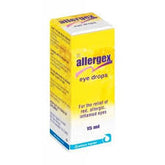Kawasaki disease
Understanding Kawasaki Disease: Symptoms, Diagnosis, Treatment, and Complications
Kawasaki disease, also known as mucocutaneous lymph node syndrome, is a rare childhood illness characterized by inflammation of the blood vessels throughout the body. While the exact cause of Kawasaki disease is unknown, it primarily affects children under the age of five and can lead to serious complications if left untreated. Understanding the symptoms, diagnosis, treatment options, and potential complications associated with Kawasaki disease is essential for timely intervention and management.
Symptoms
Kawasaki disease typically progresses through several phases, with symptoms evolving over time. Common signs and symptoms of Kawasaki disease may include:
-
Fever: Persistent high fever (often above 102.2°F or 39°C) lasting for five days or more is a hallmark feature of Kawasaki disease.
-
Rash: A widespread, non-itchy rash may develop on the trunk, extremities, and genital area, often resembling a sunburn or measles-like eruption.
-
Conjunctivitis: Redness, irritation, or inflammation of the eyes (conjunctivitis) may occur, often with bilateral involvement.
-
Swollen Lymph Nodes: Enlargement of lymph nodes, particularly in the neck region, may be observed.
-
Oral Changes: Redness, swelling, and cracking of the lips (chapped lips), strawberry tongue (red, swollen tongue with prominent taste buds), or oral mucosal changes such as redness or peeling may occur.
-
Hand and Foot Changes: Swelling and redness of the hands and feet (edema), followed by peeling of the skin on the fingertips and toes (desquamation), may occur during the convalescent phase of Kawasaki disease.
-
Gastrointestinal Symptoms: Abdominal pain, vomiting, diarrhea, or other gastrointestinal symptoms may occur, particularly in younger children.
Diagnosis
Diagnosing Kawasaki disease requires a thorough medical history review, physical examination, and consideration of diagnostic criteria established by the American Heart Association (AHA) or the Japanese Ministry of Health. Diagnostic criteria for Kawasaki disease may include:
-
Fever: Persistent fever lasting five days or more is a key criterion for diagnosing Kawasaki disease.
-
Presence of Other Clinical Features: The presence of additional clinical features such as rash, conjunctivitis, oral changes, swollen lymph nodes, or extremity changes strengthens the diagnosis of Kawasaki disease.
-
Exclusion of Other Conditions: Kawasaki disease is a diagnosis of exclusion, meaning other conditions with similar symptoms, such as viral infections, scarlet fever, or toxic shock syndrome, must be ruled out.
-
Laboratory Tests: Blood tests may be performed to assess for signs of inflammation, such as elevated levels of C-reactive protein (CRP) or erythrocyte sedimentation rate (ESR), as well as other markers such as white blood cell count, platelet count, or liver function tests.
-
Echocardiography: An echocardiogram may be performed to evaluate the structure and function of the heart and assess for signs of coronary artery abnormalities or inflammation, which are potential complications of Kawasaki disease.
Treatment
Prompt treatment of Kawasaki disease is essential for reducing the risk of complications and preventing long-term cardiovascular sequelae. Treatment may involve:
-
Intravenous Immunoglobulin (IVIG): Intravenous immunoglobulin, administered as a single infusion along with high-dose aspirin, is the primary treatment for Kawasaki disease. IVIG helps reduce inflammation and lower the risk of coronary artery abnormalities when administered within the first ten days of illness onset.
-
Aspirin Therapy: High-dose aspirin therapy may be initiated during the acute phase of Kawasaki disease to reduce fever and inflammation. Once fever subsides, aspirin therapy is typically continued at a lower dose to prevent blood clot formation and inflammation.
-
Monitoring and Follow-Up: Close monitoring of symptoms, clinical status, and laboratory parameters is essential during treatment for Kawasaki disease. Follow-up echocardiograms may be performed to assess for resolution of coronary artery abnormalities or detect new onset of complications.
-
Supportive Care: Supportive measures such as fever management, hydration, and pain relief may be provided to alleviate symptoms and support overall well-being during treatment.
Complications
While most children with Kawasaki disease recover fully with appropriate treatment, the condition can lead to serious complications if left untreated or if coronary artery abnormalities develop. Potential complications of Kawasaki disease may include:
-
Coronary Artery Abnormalities: Inflammation of the coronary arteries (coronary arteritis) can lead to the development of coronary artery aneurysms, stenosis (narrowing), or thrombosis (blood clot formation), increasing the risk of myocardial infarction (heart attack) or sudden cardiac death.
-
Cardiovascular Sequelae: Long-term cardiovascular sequelae such as myocardial infarction, arrhythmias, congestive heart failure, or coronary artery disease may occur in individuals with persistent coronary artery abnormalities or extensive vessel involvement.
-
Other Complications: Rare complications of Kawasaki disease may include inflammation of other blood vessels (vasculitis), arthritis, aseptic meningitis, hepatitis, gallbladder hydrops, or renal involvement.
Conclusion
Kawasaki disease is a rare childhood illness characterized by inflammation of the blood vessels throughout the body, primarily affecting children under the age of five. While the exact cause of Kawasaki disease remains unknown, prompt recognition and treatment are essential for reducing the risk of complications and promoting recovery. By understanding the symptoms, diagnosis, treatment options, and potential complications associated with Kawasaki disease, healthcare providers can provide timely intervention and support to affected children and their families, helping to optimize outcomes and minimize the risk of long-term cardiovascular sequelae. Ongoing research into the pathogenesis, treatment strategies, and long-term outcomes of Kawasaki disease holds promise for further improving outcomes and advancing the field of pediatric rheumatology and cardiology in the future.
- Complication of Kawasaki disease
- Diagnosis of Kawasaki disease
- How is Kawasaki disease treated?
- Kawasaki disease
- Kawasaki disease myths
- Medicine for Kawasaki disease
- Remedies for Kawasaki disease
- Support for Kawasaki disease
- Symptoms associated with Kawasaki disease
- The best British Online Pharmacy
- Top 10 UK Pharmacies
- Treatment for Kawasaki disease
- What causes Kawasaki disease
- What is Kawasaki disease
- Where can I buy medicine for Kawasaki disease in the UK
- ZimSeller Pharmacy



















